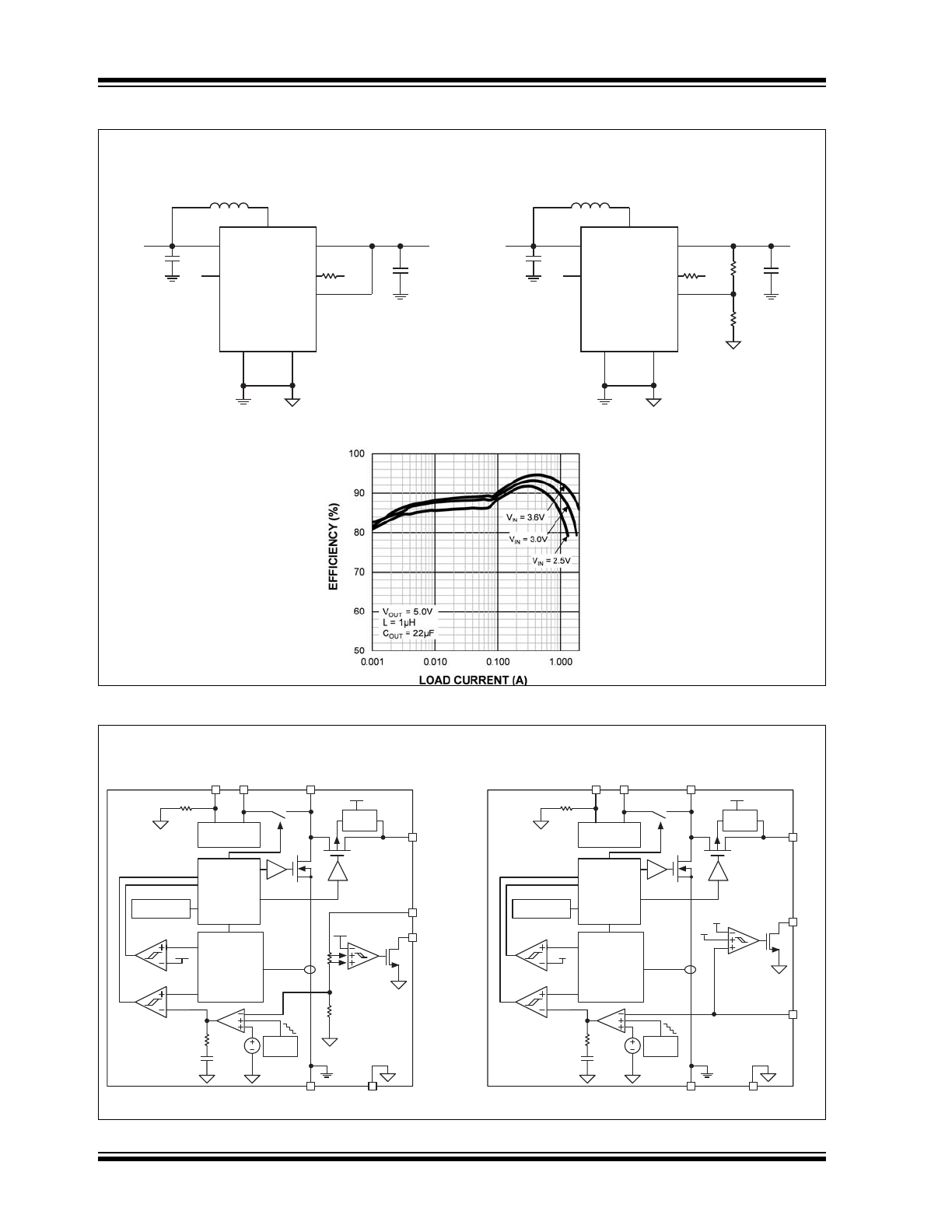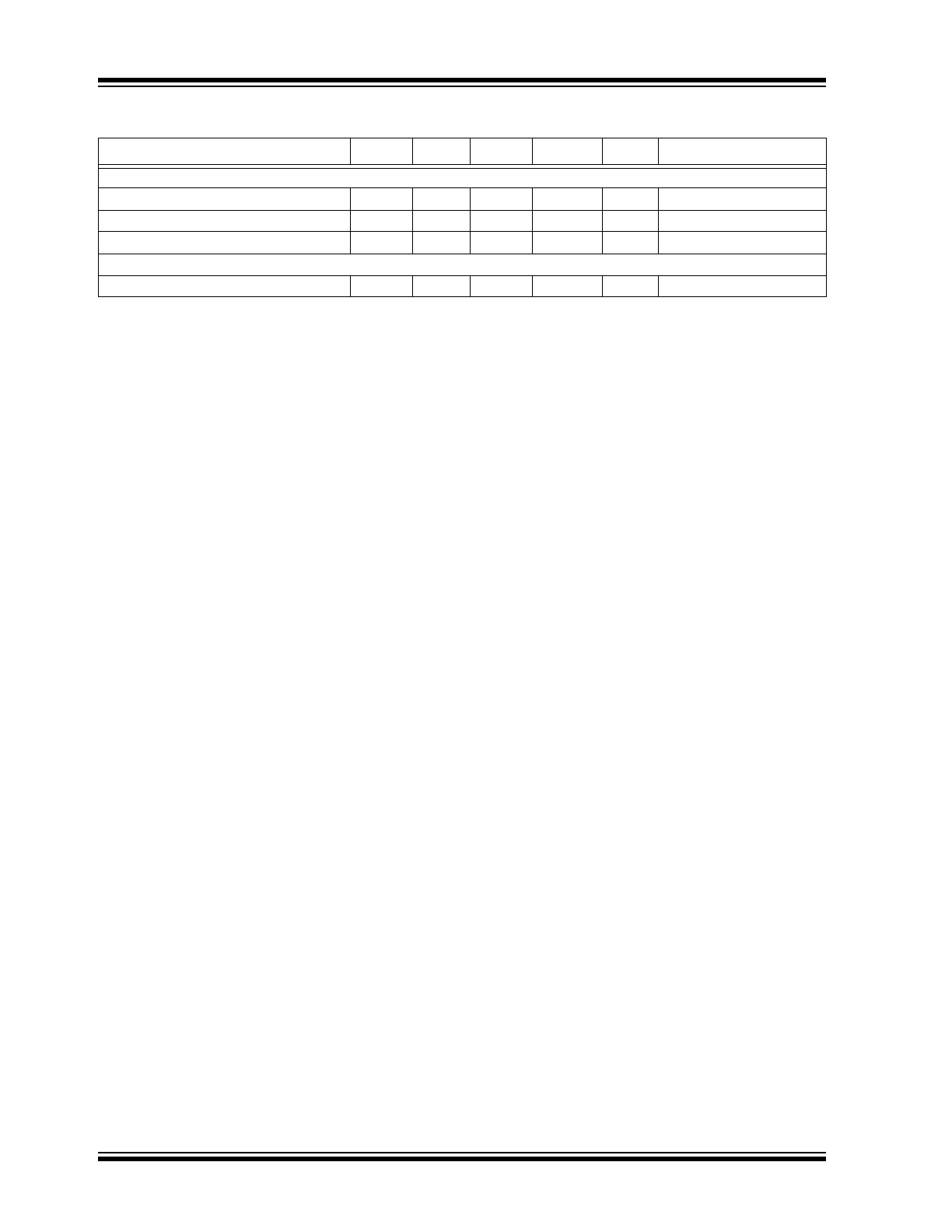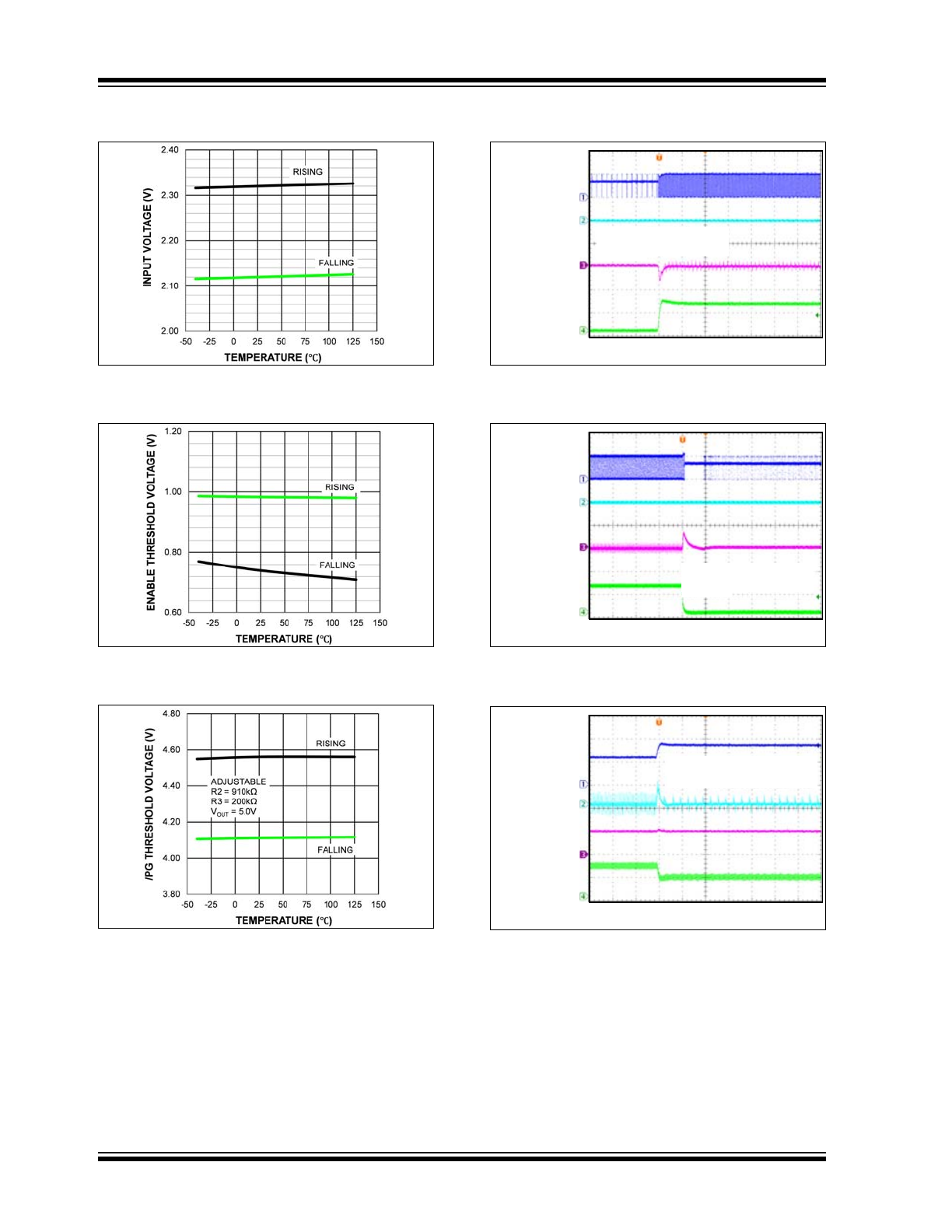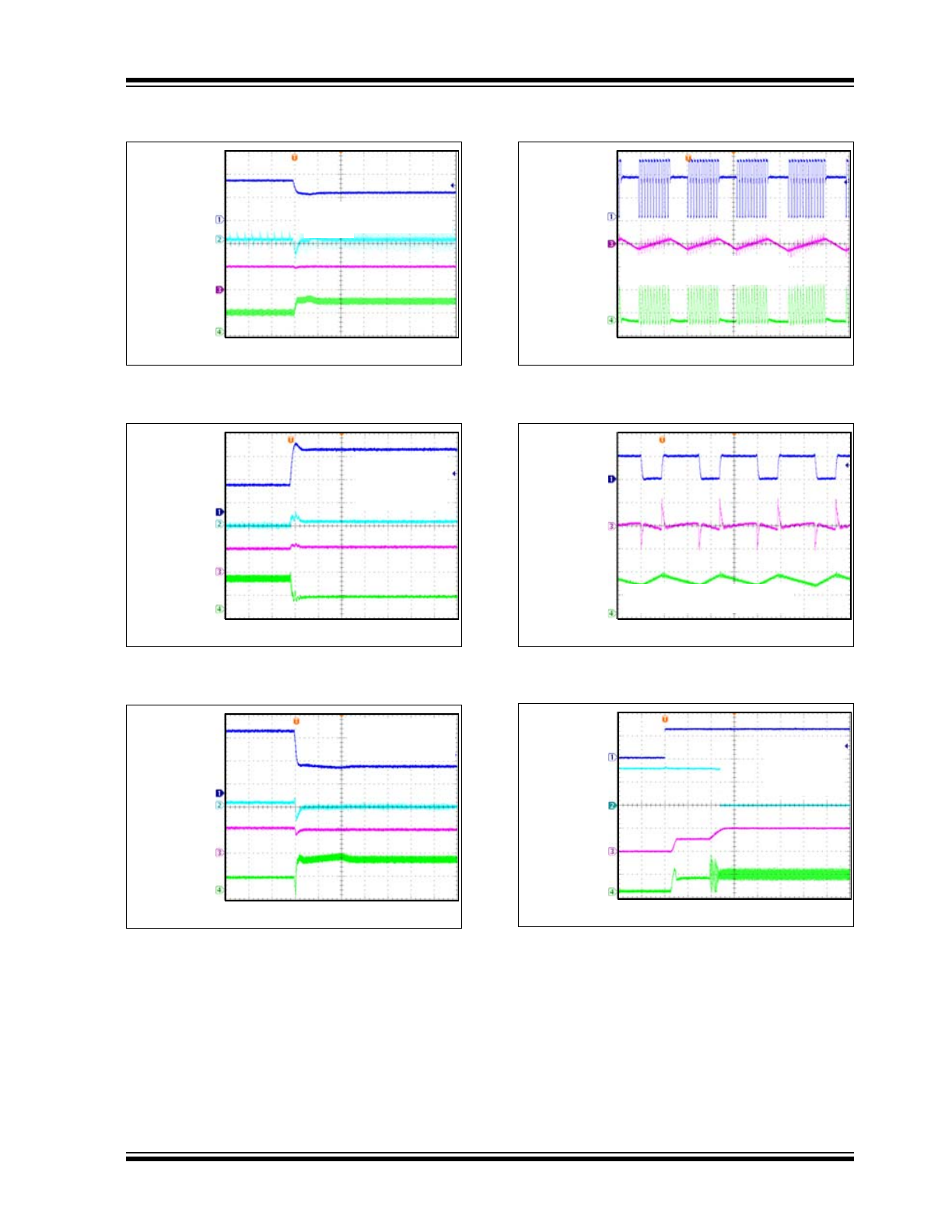
2016 Microchip Technology Inc.
DS20005572A-page 1
MIC2876
Features
• Up to 95% Efficiency
• Input Voltage Range from 2.5V to 5.5V
• Fully Integrated, High-Efficiency, 2 MHz
Synchronous Boost Regulator
• Bi-Directional True Load Disconnect
• Integrated Anti-Ringing Switch
• <1 µA Shutdown Current
• Bypass Mode for V
IN
≥ V
OUT
• Overcurrent Protection and Thermal Shutdown
• Fixed and Adjustable Output Versions
• 8-pin 2 mm × 2 mm UDFN package
Applications
• Tablets and Smartphones
• USB OTG and HDMI Hosts
• Portable Power Reserve Supplies
• High-Current Parallel Lithium Cell Applications
• Portable Equipment
General Description
The MIC2876 is a compact and highly efficient 2 MHz
synchronous boost regulator with a 4.8A switch. It
features a bi-directional load disconnect function that
prevents any leakage current between the input and
output when the device is disabled. The MIC2876
operates in bypass mode automatically when the input
voltage is greater than the target output voltage. At light
loads, the boost converter goes to the PFM mode to
improve the efficiency.
The MIC2876 also features an integrated anti-ringing
switch to minimize EMI.
The MIC2876 is available in a 8-pin 2 mm × 2 mm
UDFN package, with a junction temperature range of
–40°C to +125°C.
Package Types
MIC2876 (F
IXED
O
UTPUT
)
8-Pin 2x2 UDFN* (MT)
(Top View)
MIC2876 (A
DJ
. O
UTPUT
)
8-Pin 2x2 UDFN* (MT)
(Top View)
SW
PGND
IN
AGND
OUT
/PG
EN
OUTS
Ÿ
EP
1
2
3
4
5
6
7
8
SW
PGND
IN
AGND
OUT
/PG
EN
FB
Ÿ
EP
1
2
3
4
5
6
7
8
* Includes Exposed Thermal Pad (EP), see
Table 3-1
.
4.8A I
SW
, Synchronous Boost Regulator
with Bi-Directional Load Disconnect

MIC2876
DS20005572A-page 2
2016 Microchip Technology Inc.
Typical Application Schematics
Functional Block Diagrams
MIC2876 (Fixed Output)
2x2 UDFN
MIC2876 (Adj. Output)
2x2 UDFN
AGND
SW
V
IN
IN
EN
PGND
OUT
/PG
OUTS
V
OUT
2.5V to 5.0V
C1
4.7μF
10V
L1
1μH
R1
0ȍ
V
IN
C2*
22μF
10V
5.0V
AGND
SW
V
IN
IN
EN
PGND
OUT
/PG
FB
V
OUT
2.5V to 5.0V
C1
4.7μF
10V
L1
1μH
R1
0ȍ
V
IN
C2*
22μF
10V
5.0V
R2
Nȍ
R3
Nȍ
*
Two more 22 µF capacitors should be added in parallel with C2 for V
IN
> 5.0V.
Efficiency vs. Load Current
EN
IN
SW
ANTI-
RINGING
REFERENCE
GENERATOR
2MHz
OSCILLATOR
OC
4.8A
PWM
LOGIC
CONTROL
CURRENT
SENSE
+
SLOPE
COMPENSATION
VIN
OUT
BODY
DRIVER
HS
DRIVER
LS
DRIVER
/PG
PGND
AGND
VREF
SOFT-
START
PWM
OUTS
VIN
EN
IN
SW
ANTI-
RINGING
REFERENCE
GENERATOR
2MHz
OSCILLATOR
OC
4.8A
PWM
LOGIC
CONTROL
CURRENT
SENSE
+
SLOPE
COMPENSATION
VIN
OUT
BODY
DRIVER
HS
DRIVER
LS
DRIVER
PGL
PGH
/PG
FB
PGND
AGND
VREF
SOFT-
START
PWM
MIC2876 (Fixed Output)
MIC2876 (Adj. Output)

2016 Microchip Technology Inc.
DS20005572A-page 3
MIC2876
1.0
ELECTRICAL CHARACTERISTICS
Absolute Maximum Ratings †
IN, EN, OUT, FB, /PG to PGND ................................................................................................................... –0.3V to +6V
AGND to PGND ........................................................................................................................................ –0.3V to +0.3V
ESD Rating (HBM) (
Note 1
) .................................................................................................................................... 1.5 kV
ESD Rating (MM) (
Note 1
) ........................................................................................................................................200V
Power Dissipation (
Note 2
) .................................................................................................................... Internally Limited
Operating Ratings ‡
Supply Voltage (V
IN
) ................................................................................................................................. +2.5V to +5.5V
Output Voltage (V
OUT
) ................................................................................................................................... Up to +5.5V
Enable Voltage (V
EN
) ..........................................................................................................................................0V to V
IN
†
Notice: Stresses above those listed under “Absolute Maximum Ratings” may cause permanent damage to the device.
This is a stress rating only and functional operation of the device at those or any other conditions above those indicated
in the operational sections of this specification is not intended. Exposure to maximum rating conditions for extended
periods may affect device reliability.
‡ Notice:
The device is not guaranteed to function outside its operating ratings.
Note 1:
Devices are ESD sensitive. Handling precautions are recommended. Human body model, 1.5 kΩ in series
with 100 pF.
2:
The maximum allowable power dissipation of any T
A
(ambient temperature) is P
D(max)
= (T
J(max)
– T
A
) / θ
JA
.
Exceeding the maximum allowable power dissipation will result in excessive die temperature, and the reg-
ulator will go into thermal shutdown.

MIC2876
DS20005572A-page 4
2016 Microchip Technology Inc.
TABLE 1-1:
ELECTRICAL CHARACTERISTICS
Electrical Characteristics:
V
IN
= 3.6V, V
OUT
= 5V, C
IN
= 4.7 µF, C
OUT
= 22 µF, L = 1 µH, T
A
= 25°C, unless noted.
Bold
values are valid for –40°C ≤ T
J
≤ +125°C. (
Note 1
)
.
Parameters
Sym.
Min.
Typ.
Max.
Units
Conditions
Power Supply
Supply Voltage Range
V
IN
2.5
—
5.5
V
—
UVLO Rising Threshold
V
UVLOR
—
2.32
2.49
V
—
UVLO Hysteresis
V
UVLOH
—
200
—
mV
—
Quiescent Current
I
VIN
—
109
—
µA
Non-switching
V
IN
Shutdown Current
I
VINSD
—
1
3
µA
V
EN
= 0V, V
IN
= 5.5V,
V
OUT
= 0V
V
OUT
Shutdown Current
I
VOUTSD
—
2
5
µA
V
EN
= 0V, V
IN
= 0.3V,
V
OUT
= 5.5V
Output Voltage
V
OUT
V
IN
—
5.5
V
—
Feedback Voltage
V
FB
0.8865
0.9
0.9135
V
Adjustable version, I
OUT
= 0A
Voltage Accuracy
—
–1.5
—
+1.5
%
Fixed version, I
OUT
= 0A
Line Regulation
—
—
0.3
—
%/V
2.5V < V
IN
< 4.5V,
I
OUT
= 500 mA
Load Regulation
—
—
0.2
—
%/A
I
OUT
= 200 mA to 1200 mA
Maximum Duty Cycle
D
MAX
—
92
—
%
—
Minimum Duty Cycle
D
MIN
—
6.5
—
%
—
Low-Side Switch Current Limit
(
Note 2
)
I
LS
3.8
4.8
5.8
A
V
IN
= 2.5V
Switch On-Resistance
PMOS
—
79
—
mΩ
V
IN
= 3.0V, I
SW
= 200 mA,
V
OUT
= 5.0V
NMOS
—
82
—
V
IN
= 3.0V, I
SW
= 200 mA,
V
OUT
= 5.0V
Switch Leakage Current
I
SW
—
0.2
5
µA
V
EN
= 0V, V
IN
= 5.5V
Oscillator Frequency
F
OSC
1.6
2
2.4
MHz
—
Overtemperature Shutdown
Threshold
T
SD
—
155
—
°C
—
Overtemperature Shutdown
Hysteresis
—
—
15
—
°C
—
Soft-Start
Soft-Start Time
T
SS
—
1.1
—
ms
V
OUT
= 5.0V
EN, /PG Control Pins
EN Threshold Voltage
V
EN
1.5
—
—
V
Boost converter and chip logic
ON
—
—
0.4
Boost converter and chip logic
OFF
EN Pin Current
—
—
1.5
3
µA
V
IN
= V
EN
= 3.6V
Power Good Threshold (Rising)
V
/PG-THR
—
0.9 x
V
OUT
—
V
—
Note 1:
Specification for packaged product only.
2:
Guaranteed by design and characterization.

2016 Microchip Technology Inc.
DS20005572A-page 5
MIC2876
Power Good Threshold (Falling)
V
/PG-THF
—
0.83 x
V
OUT
—
V
—
TABLE 1-1:
ELECTRICAL CHARACTERISTICS (CONTINUED)
Electrical Characteristics:
V
IN
= 3.6V, V
OUT
= 5V, C
IN
= 4.7 µF, C
OUT
= 22 µF, L = 1 µH, T
A
= 25°C, unless noted.
Bold
values are valid for –40°C ≤ T
J
≤ +125°C. (
Note 1
)
.
Parameters
Sym.
Min.
Typ.
Max.
Units
Conditions
Note 1:
Specification for packaged product only.
2:
Guaranteed by design and characterization.

MIC2876
DS20005572A-page 6
2016 Microchip Technology Inc.
TEMPERATURE SPECIFICATIONS
Parameters
Sym.
Min.
Typ.
Max.
Units
Conditions
Temperature Ranges
Junction Operating Temperature
T
J
–40
—
+125
°C
Note 1
Storage Temperature Range
T
S
–65
—
+150
°C
—
Lead Temperature
—
—
—
+260
°C
Soldering, 10s
Package Thermal Resistances
Thermal Resistance, UDFN-22-8Ld
JA
—
90
—
°C/W
—
Note 1:
The maximum allowable power dissipation is a function of ambient temperature, the maximum allowable
junction temperature and the thermal resistance from junction to air (i.e., T
A
, T
J
,
JA
). Exceeding the
maximum allowable power dissipation will cause the device operating junction temperature to exceed the
maximum +125°C rating. Sustained junction temperatures above +125°C can impact the device reliability.

2016 Microchip Technology Inc.
DS20005572A-page 7
MIC2876
2.0
TYPICAL PERFORMANCE CURVES
FIGURE 2-1:
Efficiency vs. Load Current.
FIGURE 2-2:
Output Voltage vs. Load
Current.
FIGURE 2-3:
Output Voltage vs. Input
Voltage.
FIGURE 2-4:
Oscillator Frequency vs.
Temperature.
FIGURE 2-5:
Output Shutdown Current
vs. Temperature.
FIGURE 2-6:
Feedback Voltage vs.
Temperature.
Note:
The graphs and tables provided following this note are a statistical summary based on a limited number of
samples and are provided for informational purposes only. The performance characteristics listed herein
are not tested or guaranteed. In some graphs or tables, the data presented may be outside the specified
operating range (e.g., outside specified power supply range) and therefore outside the warranted range.

MIC2876
DS20005572A-page 8
2016 Microchip Technology Inc.
FIGURE 2-7:
UVLO Threshold vs.
Temperature.
FIGURE 2-8:
Enable Threshold vs.
Temperature.
FIGURE 2-9:
Power Good Threshold vs.
Temperature.
FIGURE 2-10:
Load Transient (0A to 1.2A).
FIGURE 2-11:
Load Transient (1.2A to 0A).
FIGURE 2-12:
Line Transient (2.5V to
3.5V).
V
IN
= 3.5V, V
OUT
= 5.0V
L
= 1μH, I
OUT
= 0A TO 1.2A
Time (100μs/div)
I
OUT
(1A/div)
V
SW
(5V/div)
V
/PG
(2V/div)
V
OUT
(1V/div)
(AC-COUPLED)
Time (100μs/div)
I
OUT
(1A/div)
V
SW
(5V/div)
V
/PG
(2V/div)
V
OUT
(1V/div)
(AC-COUPLED)
V
IN
= 3.5V, V
OUT
= 5.0V
L
= 1μH, I
OUT
= 1.2A TO 0A
Time (100μs/div)
I
L
(2A/div)
V
IN
(2V/div)
V
OUT
(5V/div)
V
OUT
(500mV/div)
(AC-COUPLED)
V
IN
= 2.5V TO 3.5V, V
OUT
= 5.0V
L
= 1μH, I
OUT
= 1A

2016 Microchip Technology Inc.
DS20005572A-page 9
MIC2876
FIGURE 2-13:
Line Transient (3.5V to
2.5V)
.
FIGURE 2-14:
Line Transient (2.5V to
5.5V)
.
FIGURE 2-15:
Line Transient (5.5V to
2.5V).
FIGURE 2-16:
Output Ripple (Pulse
Skipping Mode)
.
FIGURE 2-17:
Output Ripple (PWM Mode)
.
FIGURE 2-18:
Soft-Start (Boost Mode)
.
Time (100μs/div)
I
L
(2A/div)
V
IN
(2V/div)
V
OUT
(5V/div)
V
OUT
(500mV/div)
(AC-COUPLED)
V
IN
= 3.5V TO 2.5V, V
OUT
= 5.0V
L
= 1μH, I
OUT
= 1A
Time (100μs/div)
I
L
(5A/div)
V
IN
(2V/div)
V
OUT
(5V/div)
V
OUT
(2V/div)
(AC-COUPLED)
V
IN
= 2.5V TO 5.5V
V
OUT
= 5.0V
L
= 1μH
I
OUT
= 1A
Time (100μs/div)
I
L
(5A/div)
V
IN
(2V/div)
V
OUT
(5V/div)
V
OUT
(2V/div)
(AC-COUPLED)
V
IN
= 5.5V TO 2.5V
V
OUT
= 5.0V, L
= 1μH
I
OUT
= 1A
PULSE SKIPPING MODE
V
IN
= 3.5V, V
OUT
= 5.0V, I
OUT
= 50mA
Time (4μs/div)
I
L
(200mA/div)
V
SW
(2V/div)
V
OUT
(50mV/div)
(AC-COUPLED)
PWM MODE
V
IN
= 3.5V, V
OUT
= 5.0V, I
OUT
= 1.2A
Time (200ns/div)
I
L
(1A/div)
V
SW
(5V/div)
V
OUT
(50mV/div)
(AC-COUPLED)
BOOST MODE
V
IN
= 3.5V
V
OUT
= 5.0V
I
OUT
= 500mA
Time (400μs/div)
I
L
(1A/div)
V
EN
(2V/div)
V
/PG
(2V/div)
V
OUT
(5V/div)

MIC2876
DS20005572A-page 10
2016 Microchip Technology Inc.
FIGURE 2-19:
Soft-Start (Bypass Mode).
FIGURE 2-20:
Bypass Mode.
FIGURE 2-21:
Bypass Mode.
BYPASS MODE
V
IN
= 5.5V
V
OUT
= 5.0V
I
OUT
= 500mA
Time (400μs/div)
I
L
(1A/div)
V
EN
(2V/div)
V
/PG
(5V/div)
V
OUT
(5V/div)
Time (1s/div)
V
IN
(1V/div)
V
OUT
(1V/div)
BYPASS MODE – V
IN
> 5.0V
V
OUT
= V
IN
I
OUT
= 0A
V
OUT
= 5.0V
V
OUT
= 5.0V
Time (1s/div)
V
IN
(1V/div)
V
OUT
(1V/div)
BYPASS MODE – V
IN
> 5.0V
V
OUT
= V
IN
I
OUT
= 500mA
V
OUT
= 5.0V
V
OUT
= 5.0V
